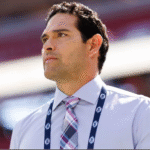The roar of the crowd, the thrill of victory, the agony of defeat – these are the familiar emotions associated with the world of sports. But beyond the competitive spirit and athletic prowess lies a hidden power: sports as a crucial tool in combating the HIV/AIDS epidemic.

While not a cure, sports offer a multifaceted weapon, striking at the core of the disease through a combination of education, prevention, support, and advocacy.
1. A Classroom Beyond Walls: Sports Ignite Education and Awareness
Imagine a learning environment where the walls are painted with vibrant colors of jerseys, the benches replaced with bleachers, and the teacher’s desk transformed into a goalpost. This becomes the unique classroom when sports are used to educate about HIV/AIDS.

Engaging the Youth: In communities with high HIV/AIDS prevalence, sports hold immense power to capture the attention of young people, particularly those who might disengage from traditional educational methods. This makes them an ideal platform to deliver crucial information about prevention methods, safe practices, and responsible behavior.
Peer Power in Action: Instead of a traditional classroom setting, sports programs can utilize peer educators. These educators, often athletes or coaches, leverage their influence and relatability to connect with participants on a deeper level. This fosters open communication and understanding, allowing young people to ask questions and learn from individuals they admire.
Breaking Down Barriers: By actively involving individuals living with HIV/AIDS in sports activities, these programs challenge societal misconceptions and discrimination. Seeing people living with the virus participate actively fosters inclusivity and understanding, paving the way for a more supportive environment.
A prime example of this approach is the Kicking AIDS Out (KAO) program, a partnership between UNAIDS and the Swedish International Development Cooperation Agency (Sida). KAO embeds HIV prevention messages and life skills education into exercises based on traditional games and sports (https://www.unaids.org/en/keywords/sport).
2. Finding Strength and Support on the Playing Field:
For individuals living with HIV/AIDS, the journey can be physically and emotionally challenging. Sports can offer a much-needed source of support and well-being:
- Boosting the Body and Mind: Regular physical activity, inherent in most sports, has numerous health benefits. It strengthens the immune system, improves cardiovascular health, and elevates mood, which can be especially valuable for individuals managing the effects of HIV. Studies have shown that regular exercise can improve CD4 cell counts, a crucial indicator of immune system function (https://pubmed.ncbi.nlm.nih.gov/33745404/).
- Finding Community and Belonging: The camaraderie and social interaction inherent in sports provide a sense of belonging and purpose. This support network can be crucial for individuals living with HIV/AIDS, fostering resilience and combating feelings of isolation. Programs like the Positive Games, an international sporting event for athletes living with HIV/AIDS, exemplify the power of sports in building a supportive community (https://childswork.com/products/the-positive-thinking-game).
- Empowerment Through Achievement: Participating in sports allows individuals to set goals, overcome challenges, and experience the joy of accomplishment. This sense of empowerment can significantly improve self-confidence and overall well-being.
The Stephen Lewis Foundation’s Team Canada Kenya program, which sends Canadian athletes to train and mentor youth in Kenya, serves as an example of how sports can empower individuals. Participants, including those living with HIV/AIDS, develop life skills, gain self-confidence, and experience the joy of sportsmanship (https://stephenlewisfoundation.org/areas-of-work/).
3. A Catalyst for Change: Sports Raise Awareness and Mobilize Resources:
Sports extend their reach beyond the playing field, serving as a powerful platform for raising awareness and mobilizing resources:
- Harnessing the Spotlight: Major sporting events present a unique opportunity to raise awareness about HIV/AIDS on a global scale. Through awareness campaigns, fundraising initiatives, and even incorporating educational messages within the events themselves, sports can reach millions of people, fostering understanding and encouraging action.
- Role Models Take a Stand: Athletes, with their vast reach and influence, can become powerful advocates for HIV/AIDS awareness and prevention. By lending their voices and actively participating in awareness campaigns, they inspire others to get involved and contribute to the fight against the disease.
The (RED) campaign, a partnership between various organizations including The Coca-Cola Company and Bono from U2, leverages the influence of athletes and celebrities to raise awareness and funds for the fight against HIV/AIDS (https://www.red.org/).
Conclusion: A Winning Combination
Sports, with their unique ability to engage, empower, and connect, offer a valuable weapon in the fight against HIV/AIDS. They are not a replacement for medical care, but a powerful tool for **prevention, education
Author Profile
- Khalid Javed is known as Khalid Minhas is editor of Daily Olympic.He is a seasoned journalist and worked with different national and international media outlets.
Latest entries
 CricketNovember 8, 2025Explosive Ayub Blitz Secures Pakistan ODI Series Win
CricketNovember 8, 2025Explosive Ayub Blitz Secures Pakistan ODI Series Win CricketNovember 8, 2025“Ice Broken”: India and Pakistan Begin Negotiations to Resolve Asia Cup Trophy Deadlock
CricketNovember 8, 2025“Ice Broken”: India and Pakistan Begin Negotiations to Resolve Asia Cup Trophy Deadlock FootballNovember 7, 2025FIFA World Cup 26 Play-Off Draw Set for November 20
FootballNovember 7, 2025FIFA World Cup 26 Play-Off Draw Set for November 20 NFLNovember 7, 2025Fox Sports Replaces Mark Sanchez with Drew Brees
NFLNovember 7, 2025Fox Sports Replaces Mark Sanchez with Drew Brees
